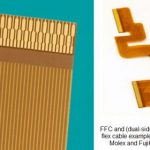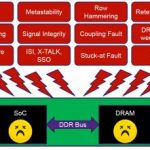The three F’s of electronic product development are: form, fit, and function. Although the F/F/F assessment typically refers to the selection of the right component, it most definitely also refers to the selection of the proper cabling between assemblies. The requirements for cables are varied, and demanding: ability… Read More
Electronic Design Automation
Catching low-power simulation bugs earlier and faster
I’ve owned and used many generations of cell phones, starting back in the 1980’s with the Motorola DynaTAC phone and the biggest usability factor has always been the battery life, just how many hours of standby time will this phone provide and how many minutes of actual talk time before the battery needs to be recharged… Read More
Keynote: Silicon is the New Steel: Building the World’s First Terascale Network
Prof. Thomas Lee from Stanford University is the keynote speaker at the upcoming 38th EOS/ESD Symposium (September 11-16, Anaheim). The EOS/ESD Symposium is focused on discussing the issues and providing the answers to electrostatic discharge in electronic production and assembly.
Abstract:
Steel transformed civilization… Read More
Webinar Alert – Helping Mixed Signal not be Mixed Up
Today’s profound statement: “don’t fall in love with your tools, figure out the biz process change first.” Mixed-signal SoC designers are having ample challenges with their design process and are in need of design management, but don’t want another tool to do it.… Read More
A Software Company Making Hardware
I’ve been a daily Facebook user for many years now and it keeps me in touch with family, friends, some business contacts and even a handful of high-tech companies. My first impression is that Facebook is a very successful, cloud-based, social platform staffed with software developers and a few marketing mavens. On closer… Read More
Custom layout productivity requires unrelenting EDA vendor focus
The EDA tools industry relies upon ongoing productivity enhancements to existing products, to manage increasing SoC complexity and to address shrinking design schedules. The source of ideas for enhancements can come from a variety of sources – e.g., customer feedback, collaboration with the foundries, and features found … Read More
Radio Integration – the Benefits of Built-In
It’s always a pleasure when a vendor gives a really informative, vendor-independent presentation on what’s happening in some domain of the industry and wraps up with (by that point) a well-deserved summary of that vendor’ solutions in that space. Ron Lowman did just that at the Linley conference on Mobile and Wearables, where … Read More
Why using new DDR4 allow designing incredibly more efficient Server/Storage applications?
The old one-size-fits-all approach doesn’t work anymore for DDR4 memory controller IP, especially when addressing the enterprise segments, or application like servers, storage and networking. For mobile or high end consumer segments, we can easily identify two key factors: price (memory amount or controller footprint) … Read More
At What Point Does Transistor Gate Length Stop Getting Smaller?
When I started doing IC design back in 1978 we had 6,000 nm channel gate lengths, and today you can buy a smart phone with 16 nm or 14 nm technology, although the gate lengths in those phones are more like 34 nm. The International Technology Roadmap for Semiconductors (ITRS) makes predictions about emerging trends in our industry and… Read More
A Credible Player at the Power Table
For a while it seemed like Mentor lived on the margins of the (RTL) design-for-power game. They had interesting micro-architectural optimization capabilities through their Calypto heritage but no real industry chops in power estimation, a must-have when you are claiming to reduce power. Better known offerings in RTL power … Read More









AI RTL Generation versus AI RTL Verification